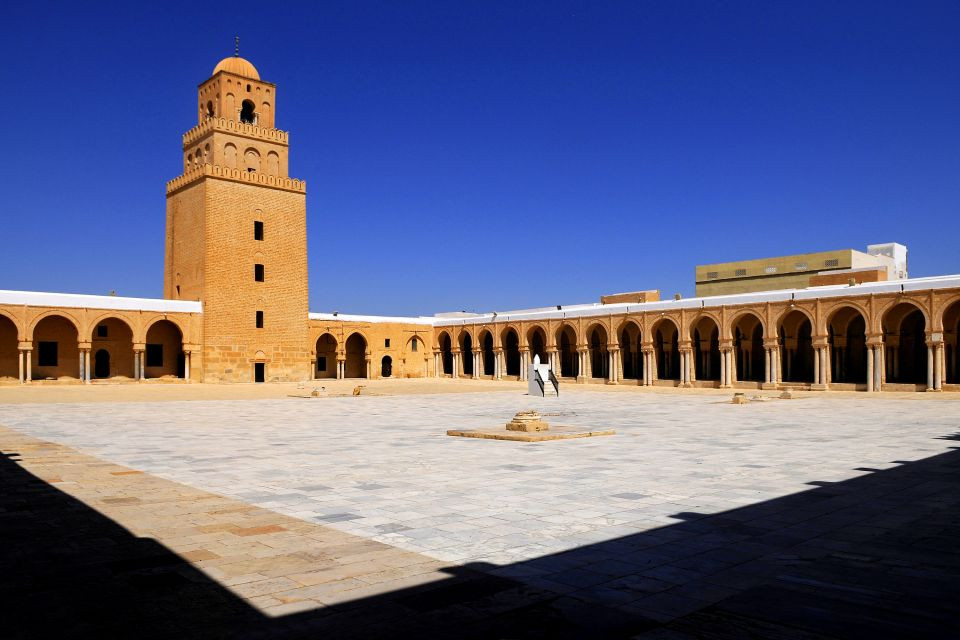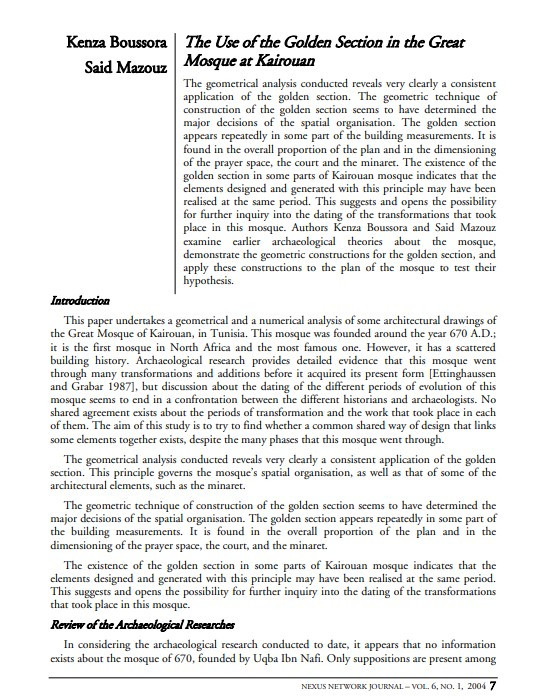

This paper undertakes a geometrical and a numerical analysis of some architectural drawings of
the Great Mosque of Kairouan, in Tunisia. This mosque was founded around the year 670 A.D.;
it is the first mosque in North Africa and the most famous one. However, it has a scattered
building history. Archaeological research provides detailed evidence that this mosque went
through many transformations and additions before it acquired its present form [Ettinghaussen
and Grabar 1987], but discussion about the dating of the different periods of evolution of this
mosque seems to end in a confrontation between the different historians and archaeologists. No
shared agreement exists about the periods of transformation and the work that took place in each
of them. The aim of this study is to try to find whether a common shared way of design that links
some elements together exists, despite the many phases that this mosque went through.
The geometrical analysis conducted reveals very clearly a consistent application of the golden
section. This principle governs the mosque’s spatial organisation, as well as that of some of the
architectural elements, such as the minaret.
The geometric technique of construction of the golden section seems to have determined the
major decisions of the spatial organisation. The golden section appears repeatedly in some part of
the building measurements. It is found in the overall proportion of the plan and in the
dimensioning of the prayer space, the court, and the minaret.
The existence of the golden section in some parts of Kairouan mosque indicates that the
elements designed and generated with this principle may have been realised at the same period.
This suggests and opens the possibility for further inquiry into the dating of the transformations
that took place in this mosque.
I agree to the terms outlined below:
You agree to upload and assign Mosqpedia Database the rights to use the content worldwide and in perpetuity across all current and future media platforms. Mosqpedia Database may edit, copy, adapt and translate your contribution.
The content will be distributed under the Creative Commons Attribution-Deed – Attribution-NonCommercial-NoDerivatives 4.0 International – Creative Commons
All data will be stored in line with data protection regulations.